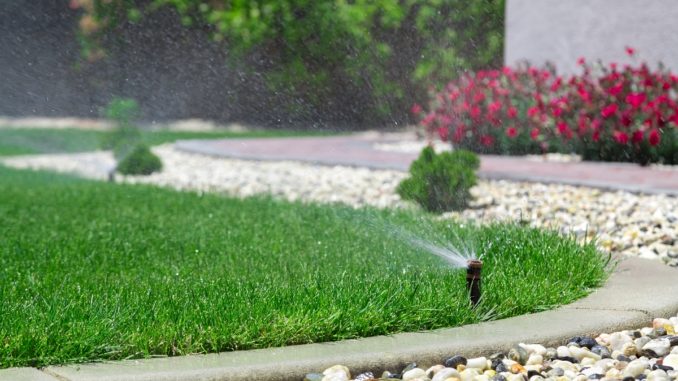
Having a low maintenance lawn is an increasingly popular trend among homeowners. In regions which experience all four seasons distinctly, maintenance of a grass lawn can present a significant challenge and incur expenses. If you aren’t excited by the thought of devoting hours every week to trimming and weeding, then you may be interested in exploring the alternatives.
There are many ways to get creative and have a presentable lawn while saving on time, effort, and the side costs of water and fertilizer. Recycled glass, rubber, or nonliving materials, can make a beautiful first impression while requiring little or no maintenance. In places like Utah, landscape work using gravel can match the rugged backdrop of the natural scenery, creating more harmony than a manicured turfgrass lawn.
The cost of grass maintenance
Several factors play in managing a typical grass lawn. Other than your own time and effort, climate determines suitable varieties and seeding times. Fertilization amounts and frequency, mowing, and weed control all fluctuate with the seasons. You will also need to monitor the condition of your lawn constantly for proper aeration, irrigation levels, and the need for pesticide use.
Just because it’s green doesn’t mean a grassy lawn is environment-friendly. The upkeep costs of water consumption, fertilizer, chemical use, and electricity can combine for a net negative impact on the environment.
Grass substitutes
Many people going for a low maintenance lawn immediately settle on artificial grass as a solution. However, covering your lawn with synthetic grass provides no added benefit besides maintaining the illusion of well-kept turf. A better option might be xeriscaping – using plants that grow natively and are drought resistant. This takes a little planning but still results in minimal maintenance while growing living plants.
A bit more expensive upfront, evergreen trees are still a worthy alternative. As the name implies, they are hardy and retain water superbly, surviving well through drought and winter. They are also among the most effective tree species when it comes to absorbing carbon dioxide from the air.

Recycled materials
You can use materials such as rubber to create mulch that lasts longer while protecting your plants and retaining water in the soil. Another material you can recycle is glass. Crushed and tumbled glass loses its sharp edges and can be used to fill in selected areas of your lawn, creating interesting colors and patterns in lieu of the typical flower beds.
Crushed rock
There are a wide variety of rocks, from scoria to slate, that can be used to fill out large areas of your lawn with a subtle range of color and texture. You can replace plant cover entirely with rocks, or combine them. For a unique effect that manages to be very low maintenance, combine locally sourced rocks with native plants to match the environment.

Hardscaping
Converting a section of your lawn into a functional area, such as a walkway, courtyard, or patio, can subtly reduce the surface area that requires maintenance. Use permeable materials and design, so that the underlying soil continues to receive water and air, allowing it to benefit plants in the surrounding area.
Transforming your lawn into a low maintenance creation can take a little more investment, planning, and effort initially. But it’s the long term savings on your time and energy, and environmental impact, that will make this a rewarding activity that pays for itself many times over.
